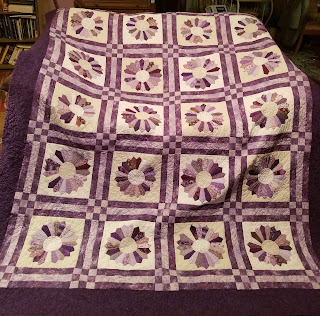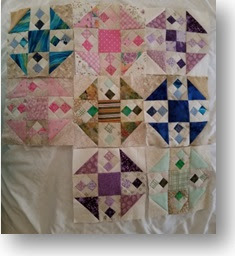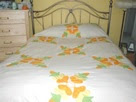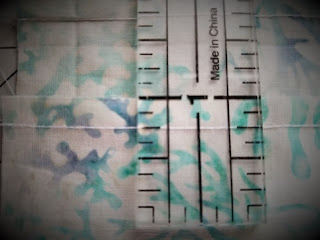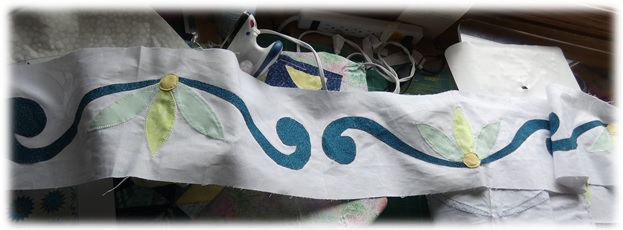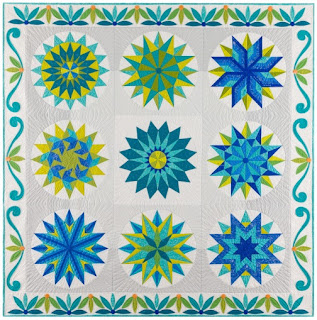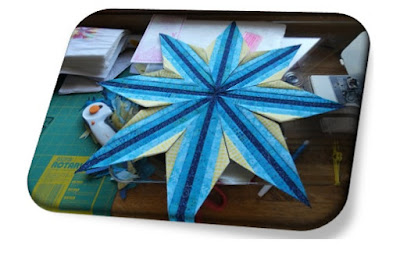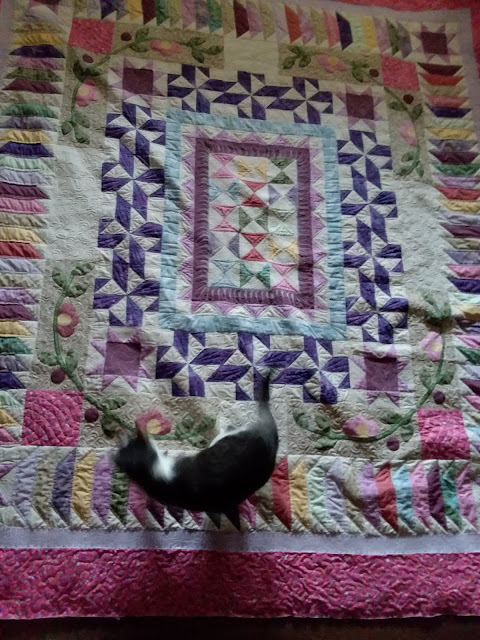I’m really pleased to have finished this one, since it has
been hanging around unfinished far too long.
In fact, I started it so long ago that I had forgotten naming
it “Orchid Flowers.” I am not exactly sure when I started this quilt. I decided
I wanted to make a traditional Dresden Plate quilt, and had begun sewing the
pieces together before having a real concept in mind. Each of the ‘plates’ is
made up of 20 ‘blades,’ which are appliqued onto a piece of background fabric.
It doesn’t show up well in the photo, but each square contains alternating
white and cream-colored paisley prints. The circle in the center is also the
opposite and alternate color. From what I can piece together, (pun intended) once
I had made 20 of them, I started to conceptualize an actual quilt. That was around
July of 2015.
This was a bit
of a storied project
According to what I’ve written previously in CHQuilts, I finished this quilt top in August, 2015. That was a few months after my husband suffered a debilitating stroke. There was no time for quilting with so many doctor and therapy appointments. It was a pretty stressful time, so when I eventually did get back to working on it, this was indeed my therapy. I wrote about that too, how quilting is good medicine.
I had planned to hand-quilt this quilt, since it is such a traditional pattern, established back in the 1920’s. I found though, that hand-quilting it proved to be quite a chore. It was hard to needle through the seams in all the blades. When I had about nine of the 20 blocks quilted, I realized I wasn’t having much fun doing it. My stress-relief project was actually having the opposite of its desired effect, so I decided to rip out everything I had done. I decided that quilting it on the machine was a much better option that might result in actually finishing it. I’m so glad I made that decision. I truly enjoyed the quilting process. So, in all, it took about about three or four months to complete. Every project I do is a challenge in some way. The challenge here was to learn to quilt feathers free-hand—no marking. I am so much more comfortable after doing these lovely, traditional quilting designs. I love how they look and am anxious to use them more often in future projects. Another challenge was to decide on the border option. I finally decided on a leaf and swirl motif, also free-hand. I love how it turned out. I will use this motif again.
I enjoyed doing it.
I told myself I would have a finished quilt this weekend.
So, I started the day Sunday, early, before breakfast, with two sides to finish.
Once that final border motif met the place where I started,
I could call it done. It was a thrill to cut that final thread. But it wasn’t
the end yet.
There was still the binding. I like to sew my binding onto the
back of the quilt by hand. That always takes longer than I’d like. So, by the
time I worked my way around all the way to where I started, I was pretty tired.
My fingers hurt. I hadn’t done hand sewing for some time and was out of practice.
Well, I certainly got the practice yesterday. I spent about 12 hours in all,
from 7 a.m. to 7 p.m. And I still wasn’t done.
To me, a quilt is never complete until after it is washed
and dried. That is when all the fabric shrinks around the stitches making the
whole thing poufy, textural. I call it ‘quilty.’
I never pre-wash my fabric. I just put a Shout Color Catcher
into the wash, two in fact, just to be sure. I have never had a problem with
dyes running or fading.
So last night, I took the warm quilt out of the dryer and
spread it out onto my lap as I sit on my favorite chair, just so I could
inspect it. Before I could look over the whole thing, a couple of cats jumped onto
my lap and snuggled into the soft, warmth of it . Now it is done. And, it is
oh, so satisfying.
